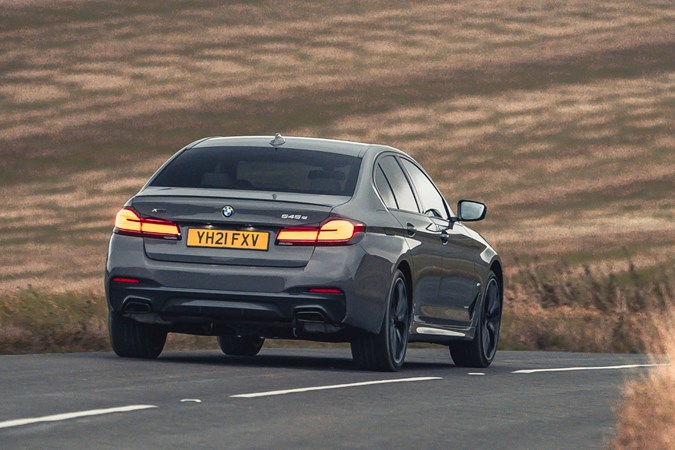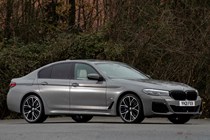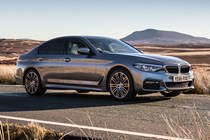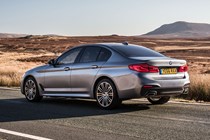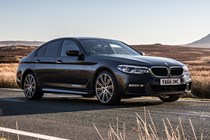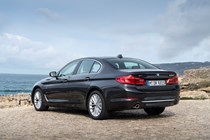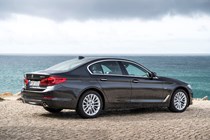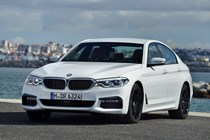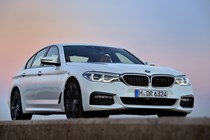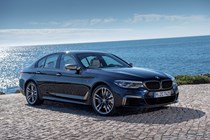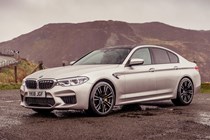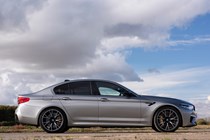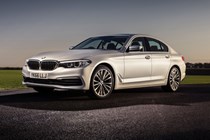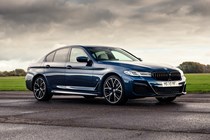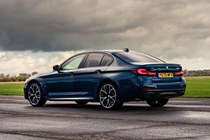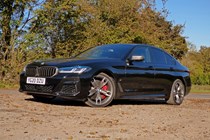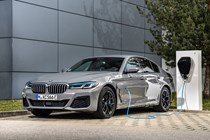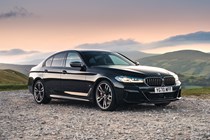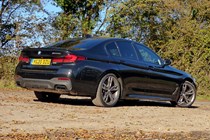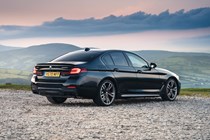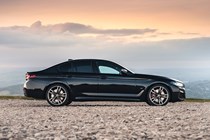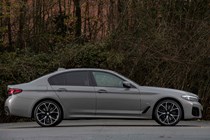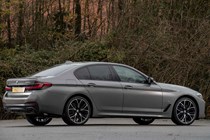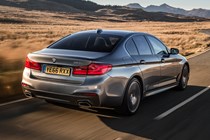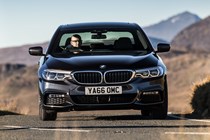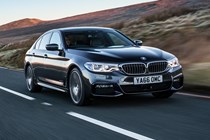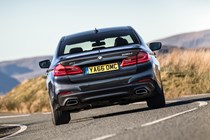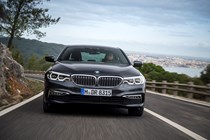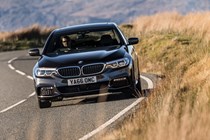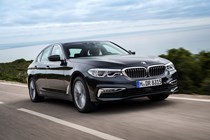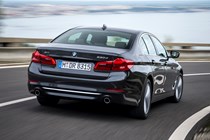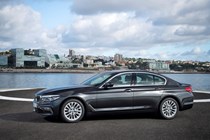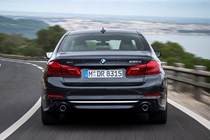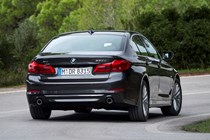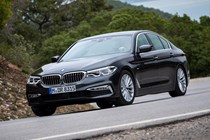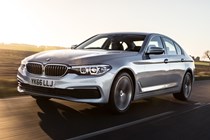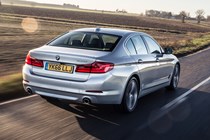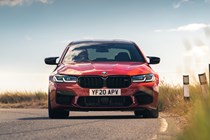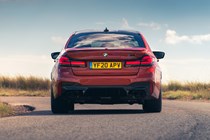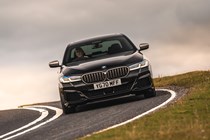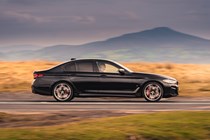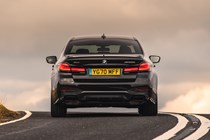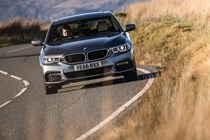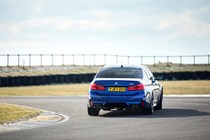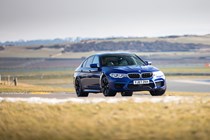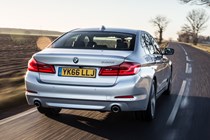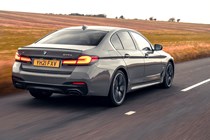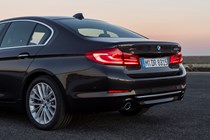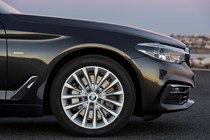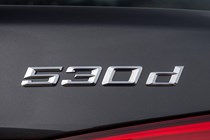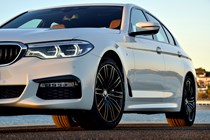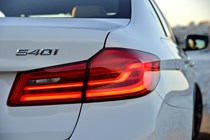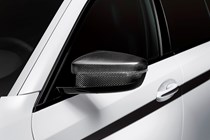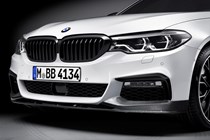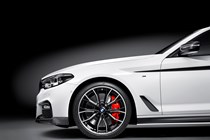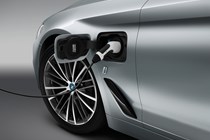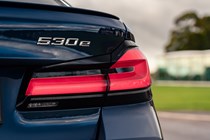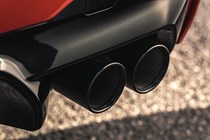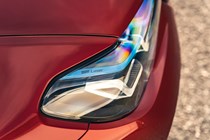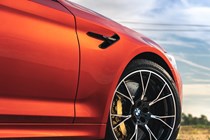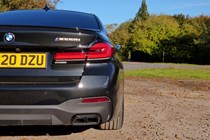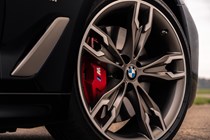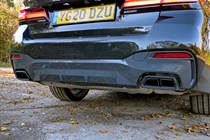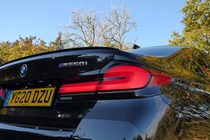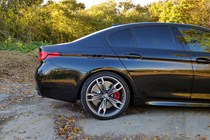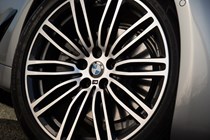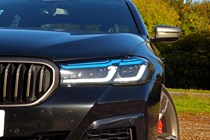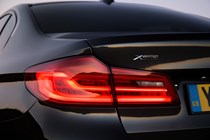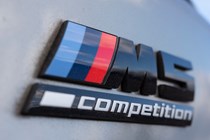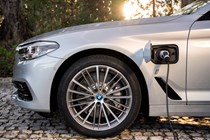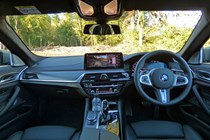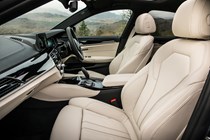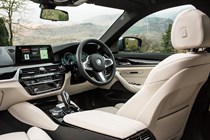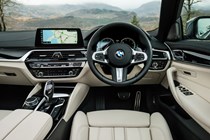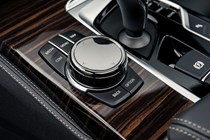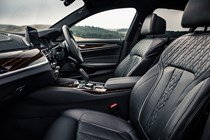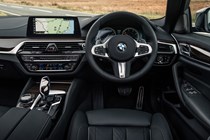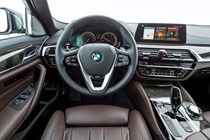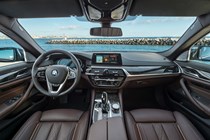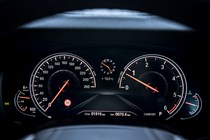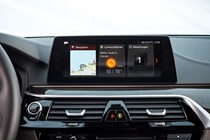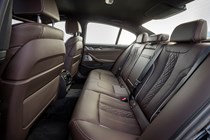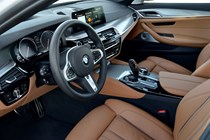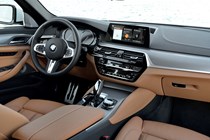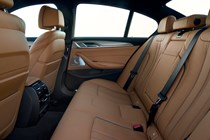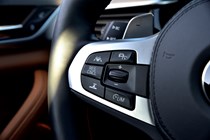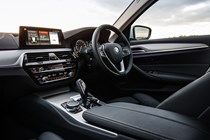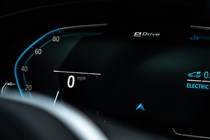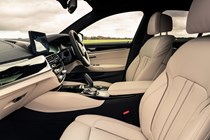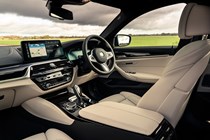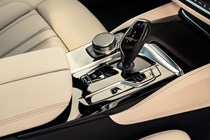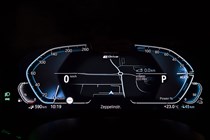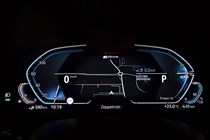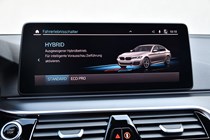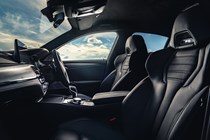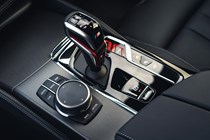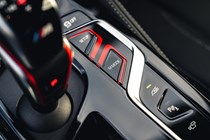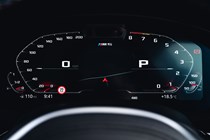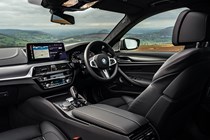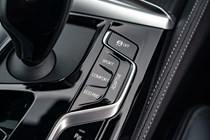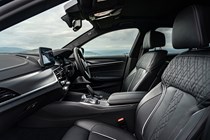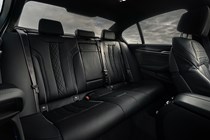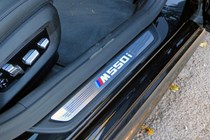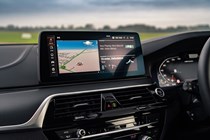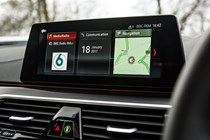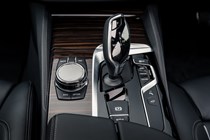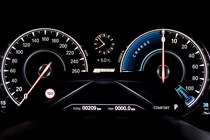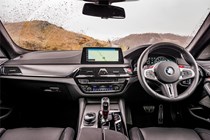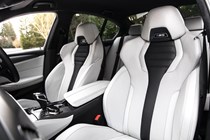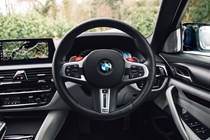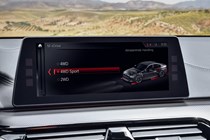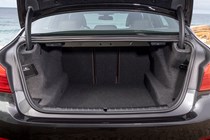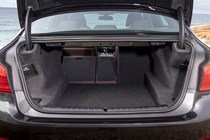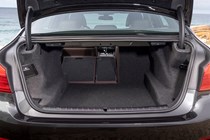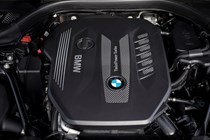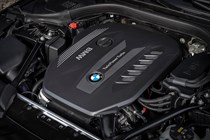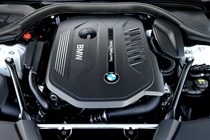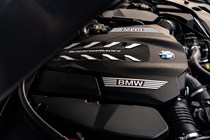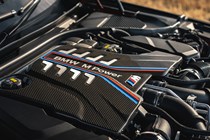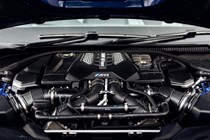
BMW 5-Series engines, drive and performance
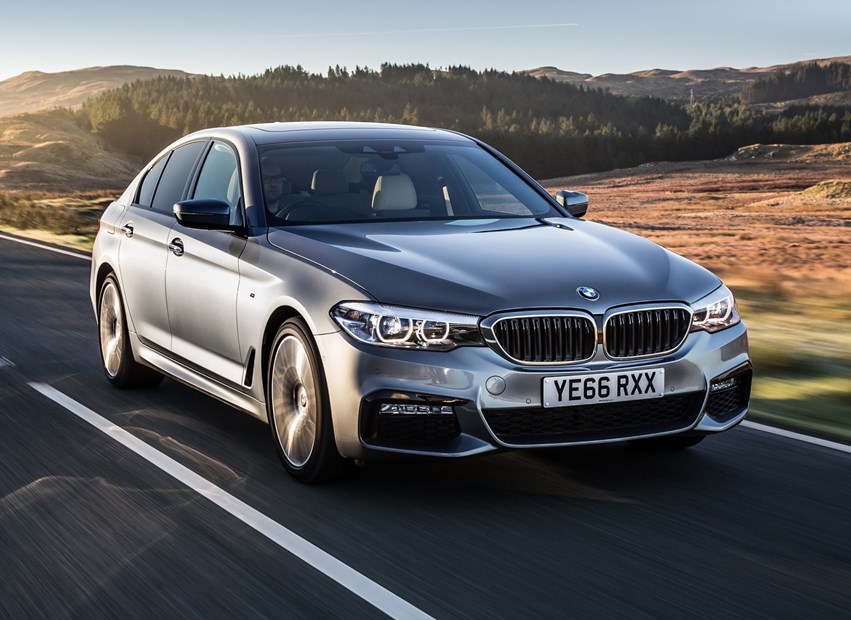
- Turbocharged petrol, diesel and hybrid options
- Diesels are all strong, refined performers
- Petrols are smooth, but will be costly to run
Petrol engines
Kicking off the petrol line-up is the 520i, a 2.0-litre four-cylinder unit producing 184hp and 290Nm of torque. This engine is capable of going from 0-62mph in 7.9 seconds and on to a top speed of 146mph.
At the top of the regular petrol line-up is the M550i xDrive. It’s a 530hp 4.4-litre turbocharged V8 exclusively paired with the xDrive all-wheel drive system to rein in the 750Nm of torque. The 0-62mph sprint takes just 3.8 seconds while top speed is electronically limited to 155mph.
This muscular engine is silky smooth and requires very little effort to get up to speed. Select Sport mode and the engine will hover around 4,000rpm to give you access to more power, but then you simply pop it back into Comfort and it all quietens down again.
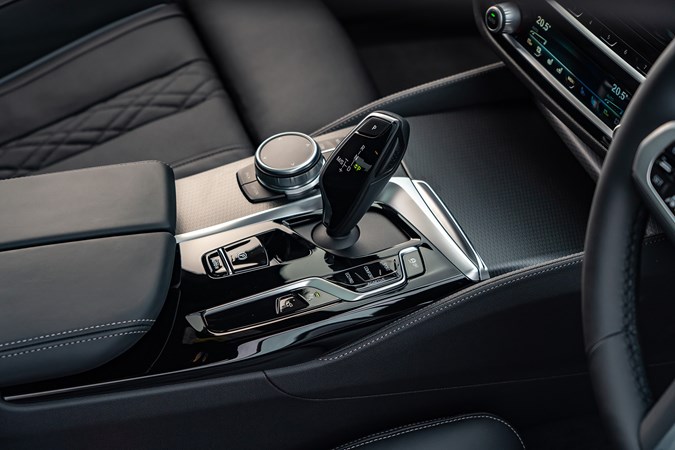
The M5 Competition is top-of-the-range and uses a 4.4-litre twin-turbo V8 petrol engine, producing a not-inconsiderable 625hp and whopping 750Nm of torque – you can read the full review here.
Diesel engines
The four-cylinder 520d is a well-known option in the 5 Series range, and historically has sold in huge numbers as the entry-level diesel. It’s more than adequate for the job for the majority of 5 Series customers. Power is a generous 190hp, while a 400Nm torque figure is more than adequate for getting up to motorway speeds.
With a 0-62mph time of 7.2 seconds and a top speed of 146mph (144mph for xDrive), it’s hardly what you’d call slow, but such is the level of refinement, there’s not much sensation of speed, either.
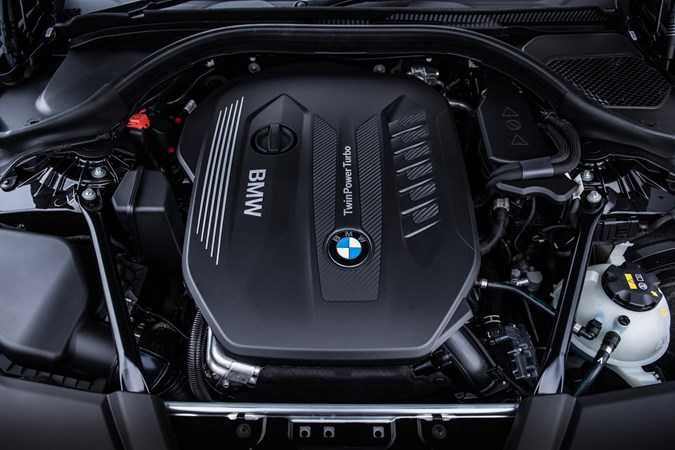
The 286hp 3.0-litre six-cylinder turbodiesel of the 530d may well be the pick of the bunch, blending brisk performance with reasonable running costs.
With 650Nm, it packs an even bigger slug of torque, but as the xDrive system distributes the power delivery between the front and rear wheels, there’s a notable absence of being pushed into the seat whenever you have a sudden need to accelerate; progress remains effortlessly smooth and relaxed, with a hint of artificial noise piped into the cabin.
Despite that, it takes just 5.4 seconds for the 0-62mph sprint, and the immense traction from the all-wheel drive system is truly impressive making for an exceptionally quick and reassuring way of driving on all roads.
Plug-in hybrids
There are two petrol-engined plug-in hybrids. The 530e and 545e xDrive. The former offers up a 2.0-litre four-cylinder petrol engine and an electric motor to channel a combined output of 292hp and 420Nm of torque. It promises comparable acceleration to the 530d, sprinting from 0-62mph in 5.9 seconds.
It’s a convincing alternative to diesel if you do a lot of short journeys or endure a lot of stop-start traffic in cities – driven sedately it’s quiet and efficient and hard to tell which power source you’re using. Less smooth throttle inputs seem to take the petrol engine by surprise, however, resulting in a noticeable changeover from electric mode to the conventional powertrain.
The 545e is even more impressive but even more money. It’s a 3.0-litre straight six making 389bhp in total. While the 530e is merely brisk, the 545e feels muscular. Dare we say it, but it even sounds good.
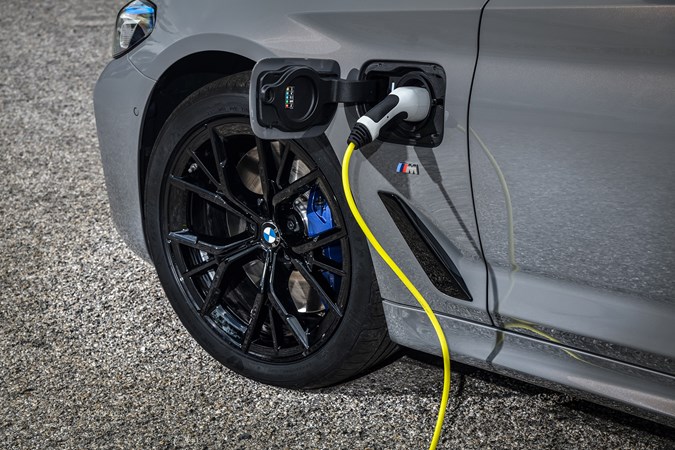
What’s it like to drive?
- A very satisfying saloon to drive
- Handling is great for such a big car
- Options designed to make it handle even better
All models come with an eight-speed automatic gearbox and, as with most BMWs, when it decides to change gear is extremely well calibrated, changing down instinctively when you just need that moment of acceleration. In sportier drive modes, the transmission keeps the engine spinning at slightly higher revs as well, to keep you in the power band. It’s rarely caught out and certainly a lot more responsive than the one found in the Audi A6.
BMWs handle well in their standard set-ups as a general rule, but buyers are able to specify adaptive dampers with a choice of driving modes, four-wheel steering and different suspension settings.
All 5 Series models deliver an involving driving experience (if that’s what you’re in the mood for), with impressive body control, that manages to settle down and be civilised when the mood suits.
The steering is responsive and effortlessly light, building up a little more weight in sportier drive modes – with enough to feel a little more connected to the front wheels, but without ever getting artificially heavy; something that can spoil other BMWs in the range. The brake pedal is also positively weighted and responsive upon application.
Models with xDrive on the back have four-wheel drive. This means you’re less likely to get stuck in the snow than with a traditional rear-wheel drive 5 Series. The drawback of the extra gubbins attached means 5 Series models with four-wheel drive are heavier, less agile, and less frugal.
